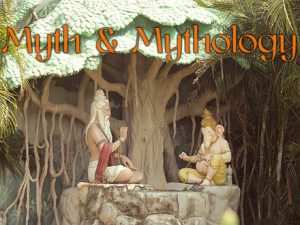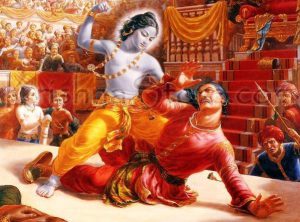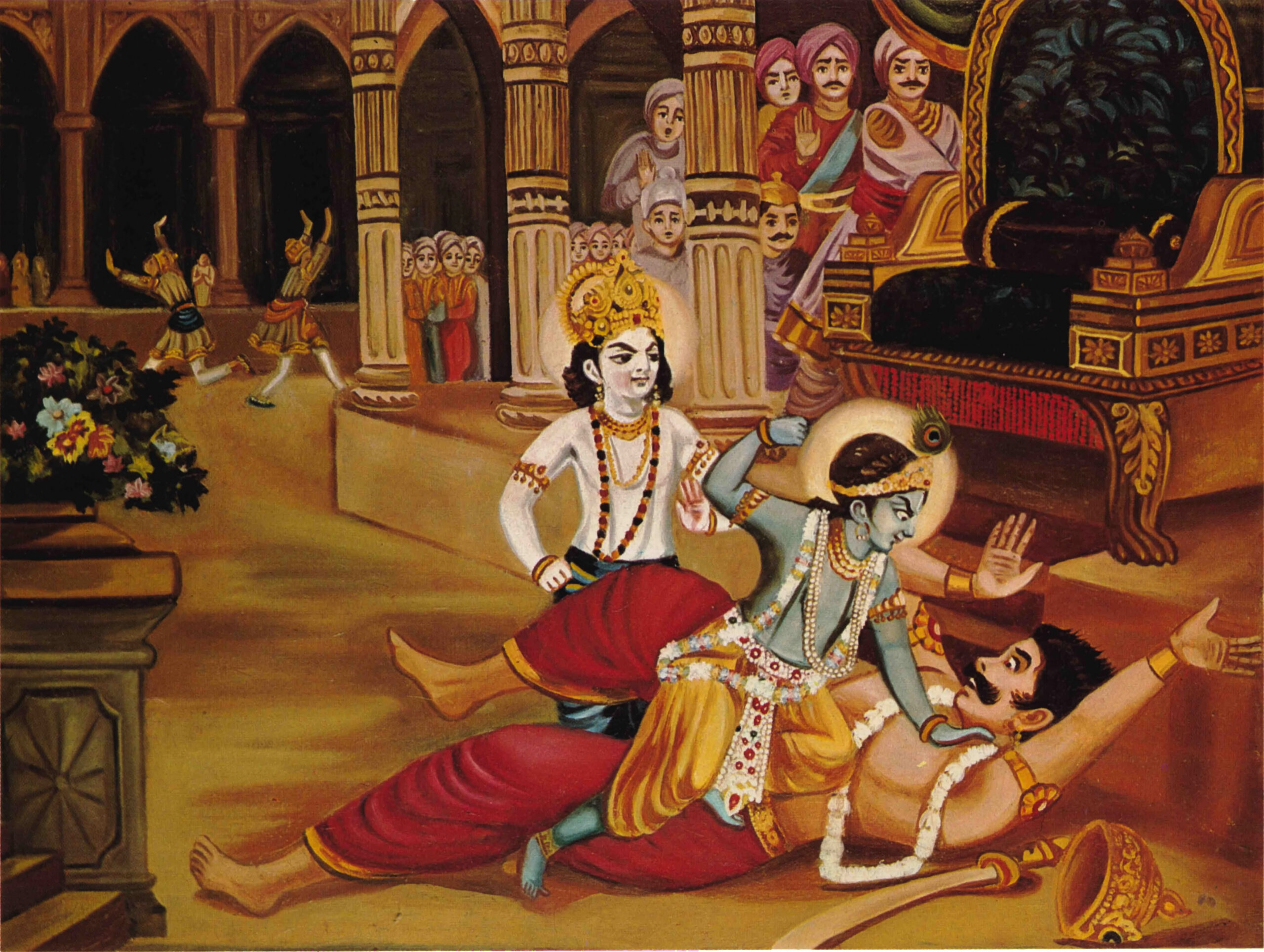 Nilanjana recounts the well-known tale of how Krishna crushed the life out of Kamsa, from the Bhagavatam, in the weekly column. A Different Truths exclusive.
Nilanjana recounts the well-known tale of how Krishna crushed the life out of Kamsa, from the Bhagavatam, in the weekly column. A Different Truths exclusive.
Sukha took a pause and began narrating the end of Kamsa, “The citizens of Mathura, and the gopalas, in particular, were thoroughly enjoying this festivity. Everyone was rejoicing, apart from Kamsa, whose plans were going awry. His favourite elephant was killed and so were the wrestlers on whom he had depended so much. Suddenly, Kamsa stood up and signaled the music to stop. He was very angry and ordered his men to confiscate all the wealth of the gopalas; he ordered that Nanda should be imprisoned; Vasudeva and his father Ugrasena should be executed and Balarama and Krishna should be taken away. His orders infuriated the young Krishna. He could no longer bear Kamsa’s tyranny and rushed towards the throne that the king was occupying. Kamsa was afraid; all the fear that he has held within him for so many years just seemed to materialise in front of him. He pulled out his sword from his scabbard and advanced towards Krishna waving the sword above his head. Krishna caught hold of Kamsa, threw him on the ground, fell on him and crushed the life out of him.
Kamsa had been fearing Krishna all his life, and hence he was thinking about him all the time. He was living, breathing, drinking, talking, and walking Krishna all through. Hence he merged with the Lord in his death.
There are four levels of merging with Divinity. In the first level, Sanidhya, one feels the presence of divinity. In the second level, Samipya, one feels very close to the Guru or to the divine. The feeling of closeness has to come from the devotee. The third one is Sarupya, being one with the form. In this state, the devotee lives, breathes, walks and talks the divinity. The last one is Sayujya, which means just dissolving in the Divine.
What Kamsa was practising, even without being aware, is often called Sambhrama yoga. In that, the hatred for the divine makes one obsessed with divinity leading one to completely merge with the divine on death.
Kamsa had eight brothers – Kanka, Nyagrodhaka, and six others. They dashed towards Krishna. Balarama stopped them. He had taken a huge iron pestle and destroyed them in a moment.
stopped them. He had taken a huge iron pestle and destroyed them in a moment.
There was confusion all over. Some people were happy that the tyrant Kamsa and his cronies were all dead. But Kamsa’s wives and his loyalists were weeping. Their world had come to an end now that the one that they loved so dearly was gone. Krishna tried comforting them; he reminded them of all the wrong that Kamsa had been doing for such a long time. Though they were aware, the sorrow and suffering would not reduce. Krishna also knew that he would not be able to provide any solace to them…
(To be continued)
Footnote: Srimad Bhagavatam is often called the Bhagavad Purana. Authored by Ved Vyasa, the stories are about the various avatars (incarnations) of Lord Vishnu, also known as Narayana. These stories are narrated by Ved Vyasa’s son Sukhadeva to King Parikshit.
©Nilanjana Dey
Photos from the Internet
#BhagavadPurana #VedVyasa #Kamsa #LordKrishna #MythAndMythology #SrimadBhagavatam #Yoga #DifferentTruths





 By
By


 By
By
Nice story about krish lila , thanks for giving this article.